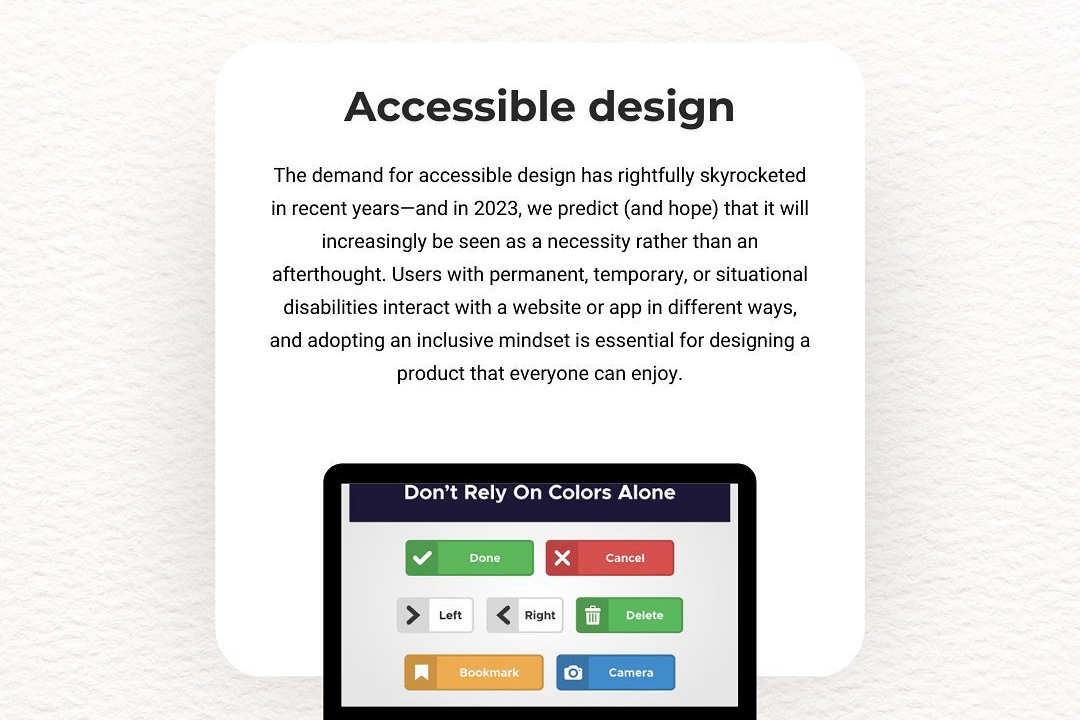Find Largest No Among Three No Program In Php
The PHP program to find the largest of three numbers is a simple script that compares three differen
Find Largest No Among Three No Program In Php
A PHP program to find the largest among three numbers is a fundamental example of conditional logic that helps in real-world scenarios where decision-making depends on comparing multiple values. Such programs are useful in applications like scoring systems, ranking, or resource allocation, where determining the maximum value quickly and accurately is essential. By using simple if-else conditions, this program demonstrates how to evaluate multiple options efficiently, making it a valuable fundamental skill for developing more complex data comparison and decision-making functionalities in web applications.
To Download Our Brochure: https://www.justacademy.co/download-brochure-for-free
Message us for more information: +91 9987184296
A PHP program to find the largest among three numbers is a fundamental example of conditional logic that helps in real world scenarios where decision making depends on comparing multiple values. Such programs are useful in applications like scoring systems, ranking, or resource allocation, where determining the maximum value quickly and accurately is essential. By using simple if else conditions, this program demonstrates how to evaluate multiple options efficiently, making it a valuable fundamental skill for developing more complex data comparison and decision making functionalities in web applications.
Course Overview
Learn to create a PHP program that efficiently finds the largest of three numbers using conditional statements, enabling you to apply fundamental logic in real-world applications and enhance your programming skills.
Course Description
The “Find Largest Number Among Three Numbers in PHP” course teaches you how to write simple PHP programs using conditional statements to identify the largest of three given numbers. This practical course helps beginners understand decision-making logic and apply it to real-world scenarios.
Key Features
1 - Comprehensive Tool Coverage: Provides hands-on training with a range of industry-standard testing tools, including Selenium, JIRA, LoadRunner, and TestRail.
2) Practical Exercises: Features real-world exercises and case studies to apply tools in various testing scenarios.
3) Interactive Learning: Includes interactive sessions with industry experts for personalized feedback and guidance.
4) Detailed Tutorials: Offers extensive tutorials and documentation on tool functionalities and best practices.
5) Advanced Techniques: Covers both fundamental and advanced techniques for using testing tools effectively.
6) Data Visualization: Integrates tools for visualizing test metrics and results, enhancing data interpretation and decision-making.
7) Tool Integration: Teaches how to integrate testing tools into the software development lifecycle for streamlined workflows.
8) Project-Based Learning: Focuses on project-based learning to build practical skills and create a portfolio of completed tasks.
9) Career Support: Provides resources and support for applying learned skills to real-world job scenarios, including resume building and interview preparation.
10) Up-to-Date Content: Ensures that course materials reflect the latest industry standards and tool updates.
Benefits of taking our course
Functional Tools
1 - PHP Programming Language: PHP is a widely used open source server side scripting language designed for web development. In this course, students learn how to write PHP scripts to implement logic for comparing three numbers, understanding syntax, variables, and control structures. The language's simplicity and effectiveness make it ideal for beginners and for building dynamic web applications. Through hands on coding exercises, students become comfortable with writing clean, efficient PHP code that accurately finds the largest number among three inputs, preparing them for real time project scenarios.
2) Integrated Development Environment (IDE): An IDE such as Visual Studio Code, PHPStorm, or Sublime Text is essential for writing, editing, and debugging PHP programs. These tools offer syntax highlighting, code suggestions, and error detection, significantly enhancing coding efficiency. Students learn how to set up their development environment, organize their code, and use debugging features to troubleshoot issues. Mastering IDE tools helps streamline development workflows, making the process of creating a find largest number program faster, more accurate, and easier to manage, which is vital for real world projects.
3) Code Version Control Systems: Tools like Git and platforms such as GitHub or GitLab are introduced to teach students about version control. Managing code changes, collaborating with team members, and maintaining project history are critical skills. Students learn to commit their code, track modifications, and revert to previous versions when necessary. For a program that finds the largest among three numbers, version control allows students to experiment with different approaches and safely store their progress, fostering good development practices and project management skills.
4) Web Hosting Environment (XAMPP/WAMP): To run PHP scripts locally, students are introduced to web server environments like XAMPP or WAMP. These tools provide Apache server, MySQL database, and PHP interpreter in one package, enabling students to test their programs on their local machines seamlessly. Setting up these environments helps students understand how PHP integrates with server processes, which is crucial when deploying web applications that depend on server side scripting. Working within these environments promotes familiarity with the deployment process, preparing students for hosting and managing live projects.
5) Basic HTML and CSS: Since PHP often works alongside HTML and CSS, students are guided on creating simple web pages that can accept user inputs and display results. HTML forms are used to input the three numbers, and CSS adds basic styling to improve usability. This knowledge allows students to build interactive web pages where users can enter numbers, and PHP processes the inputs to determine the largest value. Integrating HTML, CSS, and PHP teaches a holistic approach to web development, essential for creating user friendly applications.
6) Debugging and Error Handling Tools: Debugging tools integrated into IDEs or standalone debuggers help identify logical and syntax errors. Students learn to use breakpoints, step through code execution, and monitor variable values. Proper error handling ensures the program can manage unexpected inputs gracefully, such as non numeric entries. Developing debugging skills equips students to diagnose issues effectively, leading to reliable, bug free code—an indispensable part of professional software development, particularly for core algorithms like finding the largest number.
7) Input Validation and Sanitization Tools: To ensure the robustness of their PHP programs, students are introduced to techniques for validating and sanitizing user inputs, preventing security vulnerabilities like injection attacks. Techniques include using PHP functions such as isset(), is_numeric(), and filter_var(). Proper input validation guarantees that the program accurately compares valid numbers, leading to correct results. Understanding these security measures prepares students to develop secure applications that can handle real world data safely and reliably.
8) Documentation and Commenting Tools: Proper documentation within code enhances readability and maintainability. Students are encouraged to comment on their PHP scripts explaining the logic behind comparison operations and input handling. Using tools like inline comments and docblocks improves collaboration and code understandability. Well documented code is easier to debug, extend, and share, fostering professional coding habits vital for teamwork and project longevity in real world scenarios.
9) Testing Tools and Techniques: Tools like PHPUnit or manual testing methods are employed to verify that the program works correctly under various input conditions. Students learn to write test cases to ensure their find largest number program handles edge cases, such as equal numbers or invalid inputs. Testing cultivates a disciplined approach to software quality assurance, reducing bugs and increasing confidence in the code's performance, which is fundamental for deploying reliable applications.
10) Cloud based Development Platforms: Online platforms such as Replit or AWS Cloud9 provide a cloud environment for coding and testing PHP programs without local setups. Students can remotely develop, run, and share their find largest number project, facilitating collaborative learning and remote training. Exposure to cloud based tools helps students adapt to modern development workflows, making their projects accessible from anywhere and preparing them for distributed team environments in the industry.
11 - Database Connectivity Tools: While the core program for finding the largest of three numbers is simple, integrating database connectivity (using PHP with MySQL) introduces students to storing and retrieving data. They learn to connect their PHP scripts to databases to record input values, store results, or fetch previous calculations. This knowledge broadens their understanding of full stack development, enabling them to build more complex, data driven applications that incorporate their core logic in real time projects.
12) Object Oriented Programming (OOP) Concepts: Advancing beyond procedural coding, students explore OOP principles such as encapsulation, inheritance, and polymorphism within PHP. Applying OOP to create dedicated classes and objects for comparison operations enhances code organization and reusability. Implementing OOP concepts makes the program more scalable and easier to maintenance, reflecting real world software development practices and preparing students for complex projects.
13) Modular Coding and Code Reusability Techniques: Teaching students to write modular functions and reusable components promotes efficient coding habits. For example, creating a generic comparison function that can be reused for different sets of numbers saves time and improves code clarity. This approach minimizes redundancy and fosters maintainable codebases, critical for handling larger projects efficiently.
14) Deployment and Hosting Skills: Beyond local testing, students are guided on deploying their PHP applications to live servers or cloud platforms. They learn about file transfer protocols (FTP/SFTP), configuring web hosting environments, and setting up domain names. These skills enable students to publish their find largest number programs online, demonstrating real time project deployment and management skills essential for professional web development.
15) Security Best Practices: Introducing principles like HTTPS implementation, secure data handling, and protection against common web vulnerabilities ensures that students develop secure applications. Even for simple programs, emphasizing security builds foundational awareness, which is vital when scaling projects or handling sensitive data in real world scenarios.
16) User Interface (UI) Design Concepts: While the core program focuses on logic, students are introduced to basic UI design principles, ensuring the application is user friendly. Techniques include intuitive input fields, clear result displays, and responsive layouts. Good UI/UX practices improve user engagement and accessibility, which are important considerations when creating professional web applications.
17) Performance Optimization for PHP Applications: Students learn about optimizing their code for faster execution, such as minimizing database queries, efficient use of variables, and resource management. These skills are vital in industry settings, where responsive and efficient applications enhance user satisfaction and system scalability.
18) Automation and Scripting: Introducing automation tools allows students to perform repetitive tasks efficiently, such as running multiple test cases or deploying updates. Scripting knowledge helps streamline development workflows, reducing errors, and saving time during project development and maintenance.
19) Feedback and Code Review Practices: Encouraging peer reviews and instructor feedback cultivates collaborative development skills. Students learn to critique code constructively, improve coding standards, and adopt best practices, which are crucial components of professional development environments.
20) Certification and Industry Recognized Skills: Our comprehensive courses culminate in certification that validates students' proficiency in core web development and programming concepts. These certifications enhance employability, demonstrate technical competence, and open doors to various industry opportunities, all backed by real world projects and hands on experience.
Browse our course links : https://www.justacademy.co/all-courses
To Join our FREE DEMO Session:
This information is sourced from JustAcademy
Contact Info:
Roshan Chaturvedi
Message us on Whatsapp:
Email id: info@justacademy.co












